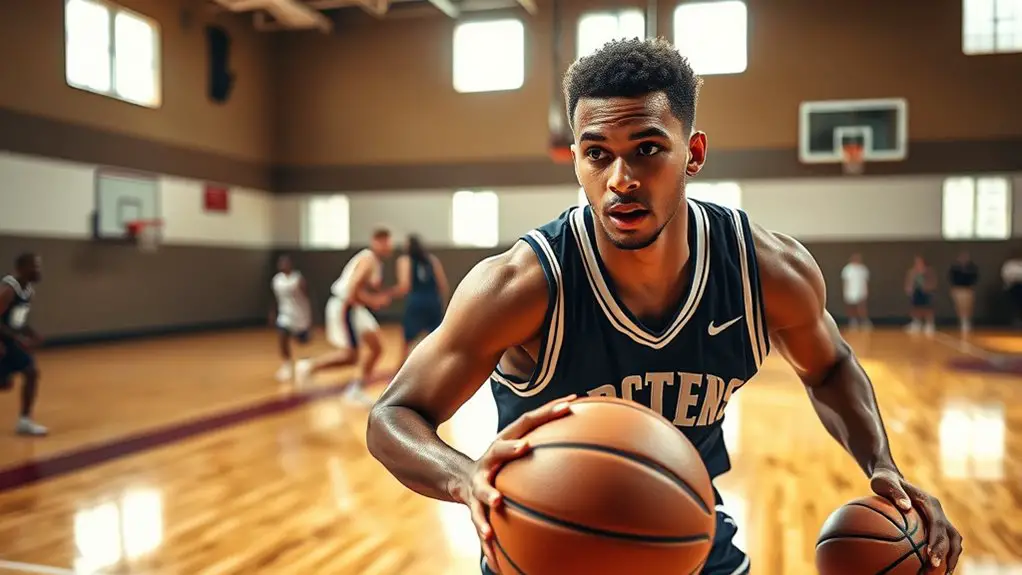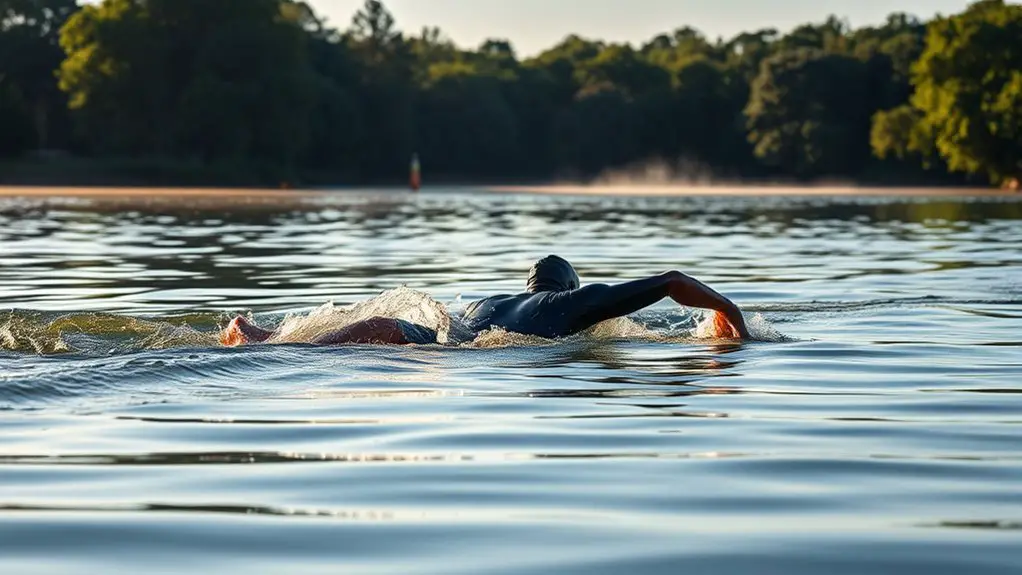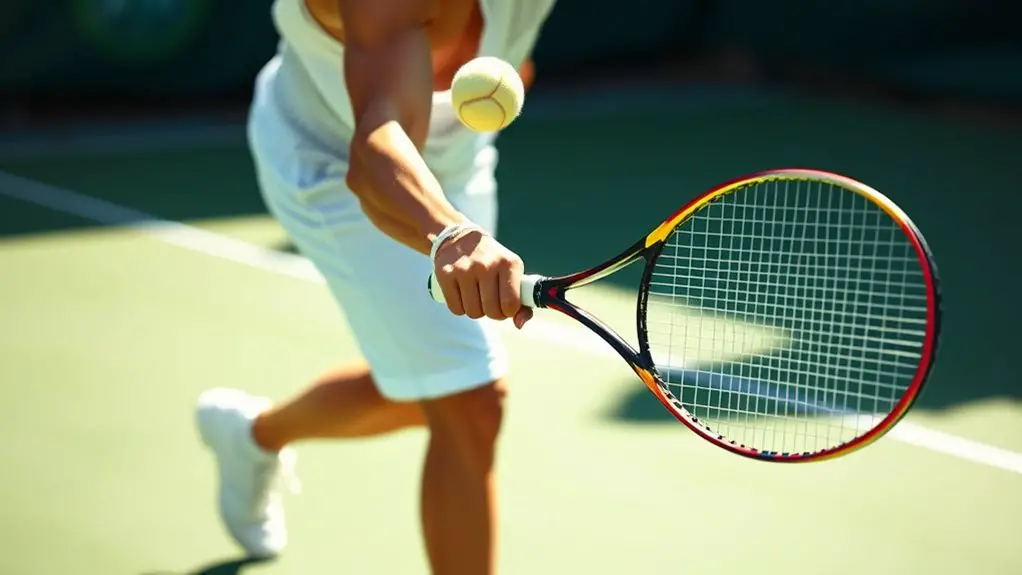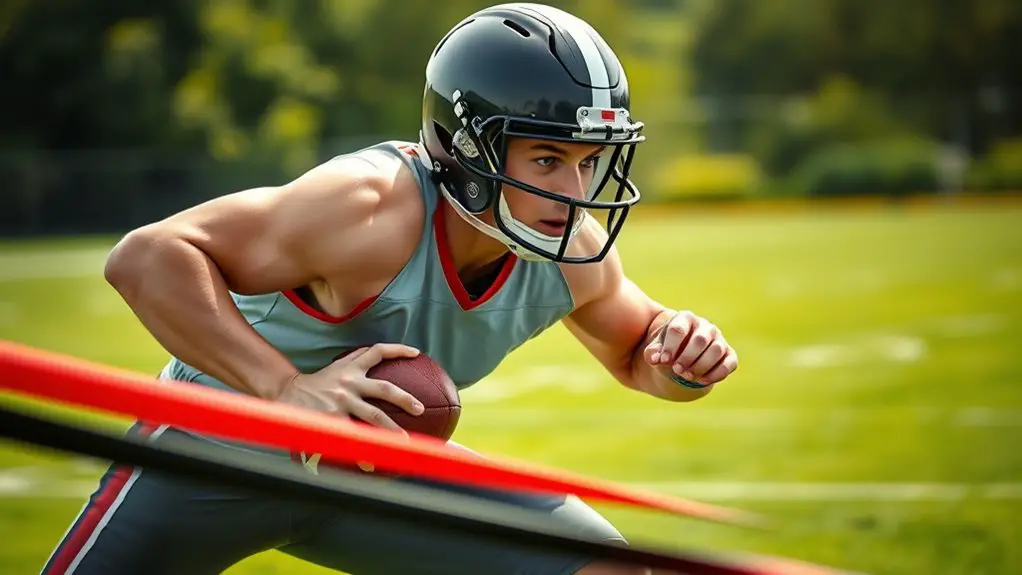To increase your court vision and improve playmaking, focus on developing your basketball IQ and spatial awareness. Engage in drills that enhance your peripheral awareness, like dribbling with your head up and practicing passes with teammates. Use visualization techniques to anticipate movements and make quicker decisions. Effective communication with your teammates will also elevate your game. Keep honing these skills and you'll discover even more strategies for enhancing your play on the court.
Understanding Court Vision
To improve your court vision, it's essential to grasp what it truly means. Court vision isn't just about seeing; it's about understanding the game around you. It's where your basketball IQ and spatial awareness come into play. Imagine being on the court, feeling the rhythm of the game, and anticipating movements before they happen. That freedom to see openings and potential plays is what elevates your performance.
Developing your basketball IQ helps you read defenses, recognize patterns, and make faster decisions. The more you understand your teammates' strengths and weaknesses, the better you'll be at finding them in the right spot. Spatial awareness involves knowing where everyone is, allowing you to navigate the court fluidly. Embracing mental toughness enables you to maintain composure and determination despite the challenges of playmaking.
Embrace this journey of understanding court vision, and you'll access the potential for more dynamic playmaking. With practice, you'll find that freedom on the court, making your game truly yours.
Drills to Enhance Peripheral Awareness
While enhancing your peripheral awareness is essential for improving court vision, incorporating specific drills into your practice routine can make a significant difference. Start with dribbling drills that challenge your focus. Try dribbling with your head up while maneuvering through cones, forcing you to keep your eyes on the court rather than the ball.
Next, add passing exercises that require you to communicate with teammates. Set up a two-man drill where one player calls out a color or number, and you have to pass the ball to that teammate while keeping an eye on the defense.
Finally, practice partner drills where one player moves around the court while you dribble, encouraging you to adjust and anticipate movements out of your direct line of sight. These drills can help you cultivate a better awareness of your surroundings, allowing for more dynamic and effective playmaking. Additionally, integrating agility training techniques into your routine will further enhance your ability to react swiftly during gameplay.
Visualization Techniques for Better Anticipation
Improving your court vision isn't just about physical drills; it also involves mental preparation. Visualization techniques can notably enhance your anticipation on the court. By practicing mental imagery, you can create a clearer picture of game scenarios, boosting your spatial awareness.
Here's how to implement visualization in your routine:
| Technique | Description | Benefits |
|---|---|---|
| Game Simulation | Visualize yourself in different game situations. | Improves anticipation skills. |
| Player Movements | Imagine how opponents and teammates move. | Heightens spatial awareness. |
| Decision-Making | Picture the best choices in various plays. | Prepares you for real-time decisions. |
Incorporating these techniques will help you see the game from multiple angles, enabling you to anticipate movements better. Remember, the mind is a powerful tool—use it to enhance your court vision! By engaging in visualization, you can train your brain for optimal performance, allowing for improved decision-making during high-pressure situations.
Improving Decision-Making Skills
As you develop your court vision, honing your decision-making skills becomes essential for executing plays effectively. To make quick, informed choices during the game, consider these strategies:
- Foster Situational Awareness: Always scan the court. Know where your teammates and opponents are to anticipate opportunities.
- Utilize Decision Trees: Visualize potential scenarios. Mapping out choices can lead you to the best play based on current conditions.
- Practice Under Pressure: Simulate game situations in practice. The more you face high-pressure scenarios, the better your instinctual decision-making will become.
- Reflect on Past Games: Analyze your decisions after each game. Understanding what worked and what didn't helps you refine your thought process.
Communicating Effectively With Teammates
Effective communication with your teammates plays a significant role in enhancing your court vision and decision-making. When you connect verbally, it sharpens team dynamics, allowing everyone to anticipate plays better. Use clear verbal cues—like calling for the ball or signaling a screen—to guarantee your teammates know your intentions.
Don't underestimate the power of eye contact and body language, too. Sometimes a nod or a pointed finger can convey what words can't. By being vocal, you create an environment where everyone feels engaged and aware, which boosts overall performance.
Encourage your teammates to share their thoughts as well; this two-way communication fosters trust and collaboration. When everyone's on the same page, your collective court vision expands, making it easier to execute plays fluidly. Additionally, fostering strong support systems can significantly elevate motivation and enhance overall team performance. So, embrace the freedom of expressing yourself on the court; it'll make you a better playmaker and elevate the entire team's game.
Analyzing Game Film for Insightful Learning
While it may seem tedious, analyzing game film can considerably enhance your court vision and overall understanding of the game. It's not just about watching; it's about learning. Here's how to make the most out of your film breakdown:
- Identify Patterns: Look for recurring plays and formations. Understanding these can help you anticipate opponents' moves.
- Evaluate Decision-Making: Focus on your choices in vital moments. Assess what worked and what didn't.
- Study Teammates: Pay attention to how your teammates move and react. This insight can improve your chemistry on the court.
- Visualize Situations: Picture yourself in similar scenarios. This mental practice can boost your confidence and decision-making during games.
Incorporating these elements into your game analysis will deepen your appreciation for the sport and empower you to elevate your playmaking skills. Embrace the process, and watch your court vision flourish! Additionally, just as in endurance sports, mental toughness can significantly enhance your ability to remain focused and make quick decisions under pressure.
Frequently Asked Questions
What Role Does Physical Fitness Play in Court Vision?
Physical fitness plays an essential role in enhancing your court vision. When you engage in endurance training, you boost your stamina, allowing you to stay focused and aware throughout the game. Agility drills improve your quickness, helping you react faster and spot open teammates. With better fitness, you'll feel more free to move, increasing your ability to read the game and make smarter decisions on the court. It's all about being in peak shape!
How Does Player Positioning Affect Court Vision?
Player positioning's critical for your court vision. When you understand off-ball movement, you can create space and exploit defensive alignment, which opens up passing lanes. If you're aware of where your teammates are, you'll have a better chance of anticipating their needs. Recognizing how defenders shift also helps you make quicker decisions. So, focus on positioning yourself and your teammates effectively to maximize your playmaking potential and enhance your overall game.
Can Age Impact Court Vision Skills?
You might think age doesn't really matter in court vision, but it can play a significant role. As you age, cognitive aging can affect your processing speed and decision-making. However, don't let that discourage you; youth development focuses on building skills that can enhance your court vision, regardless of age. With practice and the right mindset, you can maintain sharp awareness and improve your playmaking abilities, proving that age is just a number.
What Mental Exercises Improve Court Vision?
To improve your court vision, try incorporating visualization techniques and cognitive drills into your practice. Picture game scenarios in your mind, imagining player movements and potential passes. Engage in drills that challenge your decision-making under pressure, like quick reaction games. These exercises can help you anticipate plays better and enhance your overall awareness on the court. Embracing this mental training can give you the freedom to see the game from a new perspective.
How Does Practice Intensity Influence Court Vision Development?
When you think about practice intensity, it's all about how often you're hitting the court and how much skill repetition you're doing. The more you practice with focus, the sharper your court vision becomes. It's not just about going through the motions; it's about engaging fully in drills. With higher intensity and frequency, you'll start to notice patterns and develop an instinct for the game, giving you the freedom to make smarter plays.




